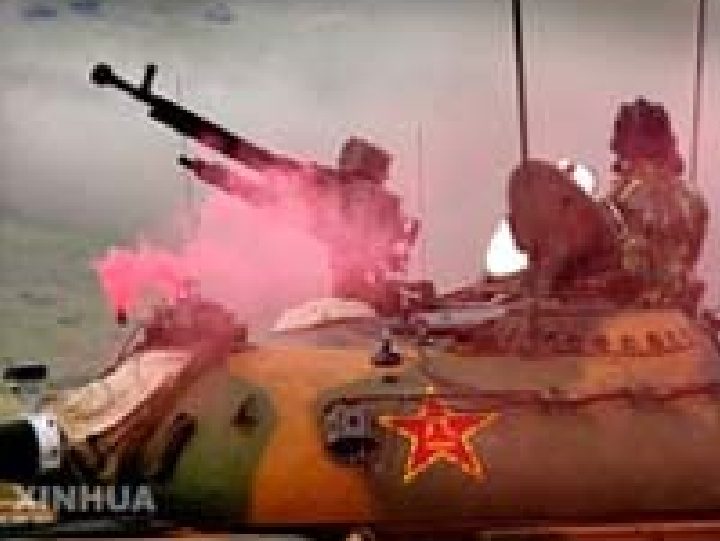



THINKING LIKE A DRAGON Chinese Uses of Military Models and Simulations Chuck Hawkins XXIV ISMOR
Once Upon a Time… Sun Tzu cautioned: With many calculations, one can win; with few one cannot. How much less chance of victory has one who makes none at all! By this means I examine the situation and the outcome will be clearly apparent . And therein lies a tale… 3
In the High and Far Off Times… In the Middle Kingdom, Oh Best Beloved… • There were no methodologies for analyzing battles • There were no force-on-force models • And there were no computerized simulations of warfare • And the Paramount Leader looked across the military landscape and said, ‘This sucks.’ 4
The Mark Let the past serve the present, let foreign things serve China —Mao Zedong • Qian Xuesen’s deportation,1954 • U.S. models and simulations attracted Chinese interest in the 1970s • Dupuy’s Numbers, Predictions, and War , 1977 • U.S. Army Model Improvement Program • Wang Shouyun’s Modern War Game , 1982 5
The Setup • Deng Xiaoping and the ‘opening up’ of China • Poverty is not socialism. To be rich is glorious. • When our thousands of Chinese students abroad return home, you will see how China will transform itself. • It doesn't matter if a cat is black or white, so long as it catches mice. • Flattery and imitation (we want to be like you) • Friendship and cooperation – Sino-American Seminar on Methodologies in Defense Systems Analysis, 1987, 1988 6
June 5, 1989 7 The Sting Tiananmen Square
And So… • After a dozen years of ‘opening up’ – Diplomatic relations became constrained – The methodology seminars ceased – And mil-to-mil engagement entered a decade-long black hole… sort of, mostly 8
The Irony After a Long Absence, Harry Potter Returns to Hogwarts • In 2002 U.S. intel community rekindled interest in Chinese thinking – Long-term study of Soviet decision making in 1970s-1980s revived as the approach • CIA/DIA seminar in 2003 on Chinese defeat criteria • But China is no longer sharing MOR information 1997-Present 1970s 1989 What did we miss? What don’t we know now? 9
10 And Our Journey Continues
China’s Motivation for Change • 1980s – Falklands War – Bekka Valley Campaign – Operation Just Cause, Panama – Tiananmen Square • 1990s – Desert Storm: Wake up call for political leaders – 1995-96 Taiwan Strait crisis – Serbia/Kosovo • 2000s – OEF and OIF 11
PLA Operations Research • Models and simulations ‘main approach’ to defense systems analysis • Computerized simulation use begins, ca. 1979-82 • Four approaches to war games – Semi-empirical (Lanchester) – Empirical (Dupuy) – Monte Carlo (Johnson) – Scientific/theoretical (von Neumann game theory) 12
War Game Development • Naval doctrinal evaluation model, 1983 • Cost/operational effectiveness of: – Air defense, 1983 – Ground artillery, 1985 – Anti-aircraft artillery, 1985 • Great Wall I, tactical model, independent action forces, 1985 • Yangtse River II, division war game, 1986 • Air defense battle simulation, 1987 13
War Game Example • Developed by OR section at AMS about 1986-87 • Division/regiment level • Networked, PC-based • Graphics, data base, Chinese character processing • Met commander’s requirements for training 14
Start Nuclear Attack Sub-Model Initialize Data: Weapon Index, Unit Combat Index Chemical/Artillery Fire Sub-Model Environmental Data, Attrition Index Coefficient Scenario Play Data Air-Ground/Ground-Air Sub-Model Input Control Data Land Combat Sub-Model Display: Initial Situation Display: Initial Index Ratio of Both Sides Battle Play Initial Force Ratio of Both Sides Force Table Two-Sided Index Attrition Rate Manual Intervention Process Command & Control Sub-Model No Combat Ended? Movement Sub-Model Yes End 15
Battle Laboratories • CPX simulations for training, C2 evaluation, event/mission synchronization • Got idea from U.S. – At least six battle labs have been stood up since late 1990s • Other uses – Logistics training, LOGEX – Camouflage, concealment and deception technology, techniques 16
17
18
19
Comprehensive National Power • Chinese-derived methodology • Complex, many elements and indices • AMS and CASS versions • Helps to show – Status hierarchy in world politics – Power potential of rivals and partners – Who will best exploit RMA – Which side will win a war • Also a rhetorical, political tool 20 See Michael Pillsbury’s China Debates the Future Security Environment
But Wait… What ever happened to Maj. Gen. Wang Shouyun? 21
22 Well, this has been dragon on long enough. Thanks for your patience.
23 Questions?
Recommend
More recommend